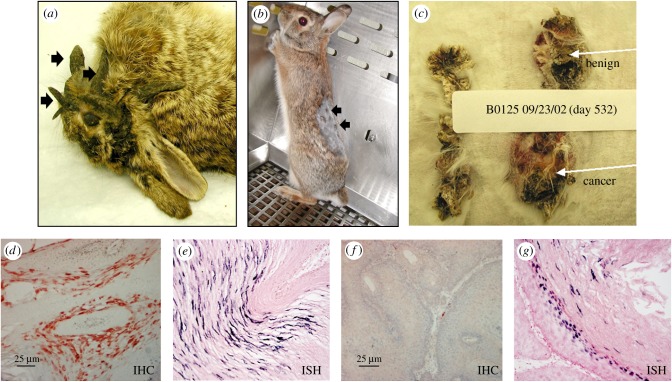Figure 1.
Discovery of Sylvalagus floridanus papillomavirus 1 (SfPV1) and the development of the SfPV1/domestic rabbit model. Wild cottontail rabbits with long horny growths around the ears and chin and on the torso are common in the midwest (a). The growths are actually warts induced by papillomavirus infections. The virus isolated from these warts is infectious and induces tumour growth in the wild rabbit (b, arrows) and domestic New Zealand white (NZW) rabbits (c). Most tumours on domestic rabbits progress to cancer within a year or more of infection (c). Viral capsid protein and viral DNA are detected in infected tissues of cottontail rabbit lesions (d,e) and NZW domestic rabbit (f,g) by immunohistochemistry (IHC) and by in situ hybridization (ISH), respectively.

